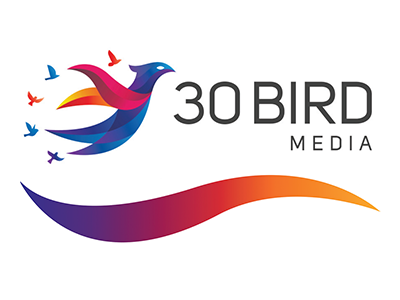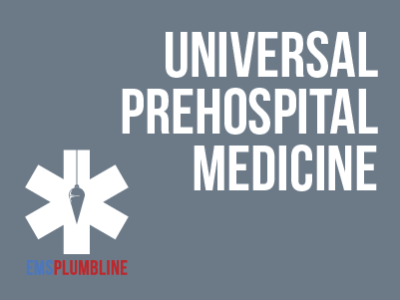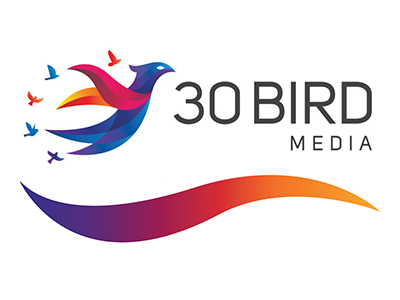 |
Sales: Qualifying |
0.50 |
In this course, you will learn how to improve your listening skills to better understand customers’ needs and decision-making criteria. You will also learn how to use questioning techniques to help customers recognize the benefits of your products and services. |
 |
Engaging English Learner Families and Communities |
1.00 |
This course will help you go deeper and gain more examples and strategies related to some of the five tips for engaging English learners' families and communities introduced in the training. Through this online course, you will learn more tips and strategies to better engage the English learner (EL) families in your school or classroom. |
 |
Managing Performance: Legal Appraisals |
0.84 |
In this course you will learn to: identify legal appraisals and responsibilities in relation to laws enforced by the EEOC, and identify risks of legal challenges and the importance of maintaining positive communication. |
 |
Making Your Home A Safer Place |
0.75 |
This course covers household safety. This includes fire and kitchen safety, emergencies, infant safety, and more. This course will help you learn about the best practices for everyone inside the house, from infants to pets. It is just one of the many health and safety courses we offer. |
 |
Supporting Social-Emotional Learning and Character Development for Teachers |
1.00 |
This course is designed to empower teachers with the knowledge and practical strategies needed to effectively support social-emotional learning (SEL) and character development in their classrooms. Participants will explore the importance of SEL and character development, learn about key concepts, and gain actionable techniques to create a positive and inclusive learning environment that fosters emotional well-being and ethical growth in students. |
 |
Electrical Safety |
0.75 |
This course covers OSHA’s role and standards regarding electrical safety/hazards, defines the basic fundamentals of electricity, identifies and recognizes safety hazards, and describes protection methods against electrical hazards.
|
 |
Zoonotic Disease and Biosecurity |
2.00 |
Every year, zoological organizations are faced by new challenges in maintaining the health of their animal collections. Zoonosis, or disease that can be spread between species, forms one of the greatest threats to the safety of animals, guests, and keepers. Using a case study from a zoonotic disease concern at the San Diego Zoo, you will learn the basics of zoonotic disease identification and prevention, including standard record keeping, best practices, health and safety protocols for keepers, and the understanding of how disease can be spread. |
 |
Introduction to Eldercare |
2.75 |
This course will equip you with the essential knowledge to navigate the unique challenges and opportunities that come with caring for older adults. |
 |
Project Management - Basic: Scope Definition, Verification, and Change Control |
1.50 |
This course will cover how to identify the process and benefits of scope definition and verification, and develop a work breakdown structure (WBS) and work package. You will also learn how to identify the types of information that stakeholders need in order to verify a project’s scope, and determine the timing of scope verification. You will be able to better understand how to control changes in project scope, identify the benefits of a scope change control system, and describe why it’s important to create a project database. |
 |
Creativity and Innovation: Personal Creativity |
1.34 |
Creativity is often considered a talent that some people have. Actually, creativity's a skill that everyone can nurture through exercise and practice. You can prepare yourself both mentally and physically to be creative.
In this course you will learn to: prepare yourself mentally and physically to be creative, and use your experiences, innocence, intuition, and sense of adventure to increase your creativity. |
 |
A K-12 Student Guide to Implicit Bias |
1.00 |
Welcome to A K-12 Student Guide to Implicit Bias. In this course geared towards K-12 students, you'll examine implicit bias, why it matters, and what can be done to address it. |
 |
Motivation: Identifying, Planning, and Implementing: Positive Mental Attitude (Instructor Guide) |
1.00 |
Your attitude affects every aspect in your life—from your family relationships to your interactions with strangers to your connections with business coworkers. Your attitude could determine the difference between getting a promotion and getting fired, and between a happy marriage and divorce. Stanford Research Institute (SRI) conducted a study that found that success is 88% attitude, and 12% education.
In this course you will learn to: improve your self-confidence, recognize your fears and work to overcome them, and identify the difference between perceptions and reality.
This Instructor's Edition of this course includes notes and suggestions to assist you in presenting the material, whether in an in-person classroom setting, or as an instructor-led online or distance-learning course. It also provides you with the answers to questions found in mid-lesson activities, as well as in the quiz that concludes the course. |
 |
Project Teams: Preparing Teams for Project Work |
1.00 |
Building a project team is more complex than assigning employees to the team. Team members must feel a sense of dedication to other team members, as well as to the project itself. Members who are not dedicated to the project team often disregard meetings, deadlines, and commitments, causing the entire team to suffer. To avoid these problems, the team managers and supervisors need to encourage team building to benefit the project, the team members, and the organization.
In this course you will learn to: empower and motivate a project team and develop positive culture in a project team, identify the causes of change in a team and manage change, and improve existing project teams. |
 |
Quality Management: Causes Of Problems (Instructor Guide) |
0.67 |
In this course you will learn to: create and interpret a cause-and-effect diagram, create and analyze a Pareto chart, create and interpret a scatter diagram, and create an interrelationship diagram and use it to identify root causes.
This Instructor's Edition of this course includes notes and suggestions to assist you in presenting the material, whether in an in-person classroom setting or as an instructor-led online or distance-learning course. It also provides you with the answers to questions found in mid-lesson activities, as well as in the quiz that concludes the course. |
 |
Egress, Fire Prevention, & Fire Protection |
0.65 |
In this course, participants will learn about escape routes and exits, emergency action plans, fire prevention plans, fires, fire extinguishers, and workplace fire prevention tips. |
 |
Creating a Supportive Classroom Community (CDA 3) |
2.00 |
Learn ways to bring out nurturing, caring behaviors in children and youth to create a classroom community where children and youth support each other. Learn how to use non-competitive games to foster acceptance of all children and youth. Identify the strengths and weaknesses for both you and the children and youth in your program, and how to put the strengths to good use creating a sense of acceptance and community. This course is designed to be part of a Child Development Associate (CDA) Credential™ curriculum. It covers CDA Subject Area 3: Supporting Children's Social and Emotional Development and may also be taken as a stand-alone learning event or as part of a broader early childhood education curriculum. |
 |
CompTIA Advanced Security Practitioner (CASP+) - Exam CAS-003 |
40.00 |
30 Bird's CompTIA Advanced Security Practitioner (CASP) CAS-003 course provides the knowledge needed to implement security solutions within an enterprise policy framework, using a vendor-neutral format. This includes risk and vulnerability management programs, organizational policies and training, applied cryptography, system security, network security, identity management, and incident response. This course maps to the CompTIA CASP certification exam. Objective coverage is marked throughout the course.
Students will benefit most from this course if you intend to take a CompTIA Advanced Security Practitioner CAS-003 exam. |
 |
Advanced Interpersonal Communication: Organizational Culture |
1.34 |
An organizational culture is the personality of an organization. This personality is both determined and accepted by the organization’s members. For example, an organization might have a culture that is youthful, energetic, and fast-paced. In this type of culture, decisions are made quickly, and employees are empowered to take action in a wide variety of situations. Another organization might be more straight-laced and policy-oriented. This organization would be much more formal and serious in the way it does business. It is important to recognize and understand the culture of an organization, so that you can determine your fit with the organization.
In this course you will learn: to determine the nature of an organization’s culture, to use the cultural network to your advantage, and identify the characteristics of the roles exhibited in the network, to identify the elements of physical culture that affect interpersonal communication, and to identify the ways in which managers can build a positive culture. |
 |
CompTIA Security+ Certification - Exam SY0-701 |
40.00 |
CompTIA Security+ Certification SY0-701 provides the basic knowledge needed to plan, implement, and maintain information security in a vendor-neutral format; this includes risk management, host and network security, authentication and access control systems, cryptography, and organizational security. This course maps to the CompTIA Security+ certification exam. Objective coverage is marked throughout the course.
You will benefit most from this course if you intend to take a CompTIA Security+ SY0-701 exam.
This course assumes that you have basic knowledge of using and configuring individual workstations and simple networks. Knowledge equivalent to the CompTIA A+ and Network+ certifications is helpful but not necessary. |
 |
Protecting Yourself While Responding to Earthquakes (Corrections) |
2.00 |
This course covers the importance of earthquake safety and protecting yourself before, during, and after an earthquake. It also covers how first responders should keep themselves safe when responding to an earthquake scene. |
 |
Mental Health - Anxiety Overview |
1.00 |
This brief overview of the topic of anxiety disorders explores the assessment and treatment that EMS providers should be familiar with. Along with the intricate evaluations that EMS providers must obtain on the patients they are caring for there is the underlying issue of evaluating ourselves. This tour of the topic will certainly offer opportunities for EMS providers to assist responders and patients alike.
Exam Description Please read each question carefully. You will have two attempts to gain a 70% or higher on this exam. If you are not successful in two attempts you are welcome to take the course again to gain the certification. Best of luck! |
 |
CompTIA IT Fundamentals - Exam FC0-U61 |
24.00 |
CompTIA IT Fundamentals - Exam FC0-U61 provides the basic knowledge needed for digital literacy: this includes the fundamental principles of hardware, software, and networks as well as best practices for using all three. This course maps to the CompTIA IT Fundamentals FC0-U61 Exam. Objective coverage is marked throughout the course. You can download an objective map for the series from the 30 Bird website.
Students will benefit most from this course if they intend to take a CompTIA IT Fundamentals FC0-U61, or if they wish to attain an introduction to the core principals and skills of information technology.
This course assumes students have basic knowledge of using a keyboard and a mouse. It does not assume that you have any formal familiarity with computers or the internet. |
 |
Safety Communication and Training Techniques |
1.50 |
This course covers certain safety and logistics measures for the workplace. This includes topics like different types of safety training, creating safety programs with different learners in mind, and how to use various types of media to communicate objectives. |
 |
Construction Safety & Prevention Program: OSHA Inspections |
0.50 |
This course covers the process of OSHA inspections, the penalties incurred when a workplace does not satisfy OSHA standards, and how to properly respond to an OSHA inspection. |
 |
E-Mail Etiquette: E-Mail Messages |
0.50 |
In this course, you will learn how to take advantage of the headers in e-mail messages. You will learn about the “To” field, in which you should type the recipient’s e-mail address. You will also learn when to send carbon copies and blind carbon copies of messages. You will learn the importance of writing a proper subject field for e-mail messages and that the header also includes the date and time of sending messages. Finally, you will learn how to construct the body of an e-mail message, add a personal touch to your messages by including a proper greeting, relay information by placing it in the appropriate order, and use different types of lists effectively. You learned the correct way to write long e-mail messages to keep recipients interested in the information and how to effectively close e-mail messages. |


























